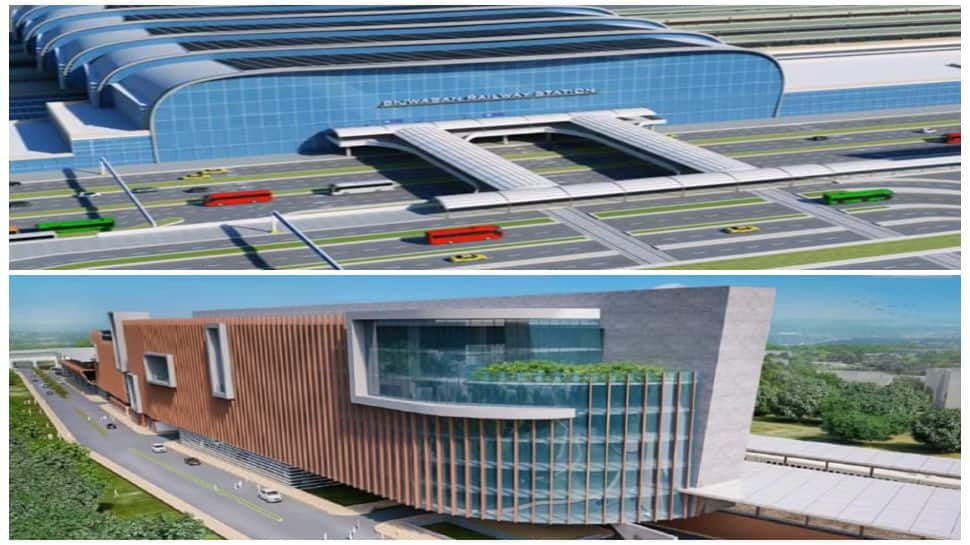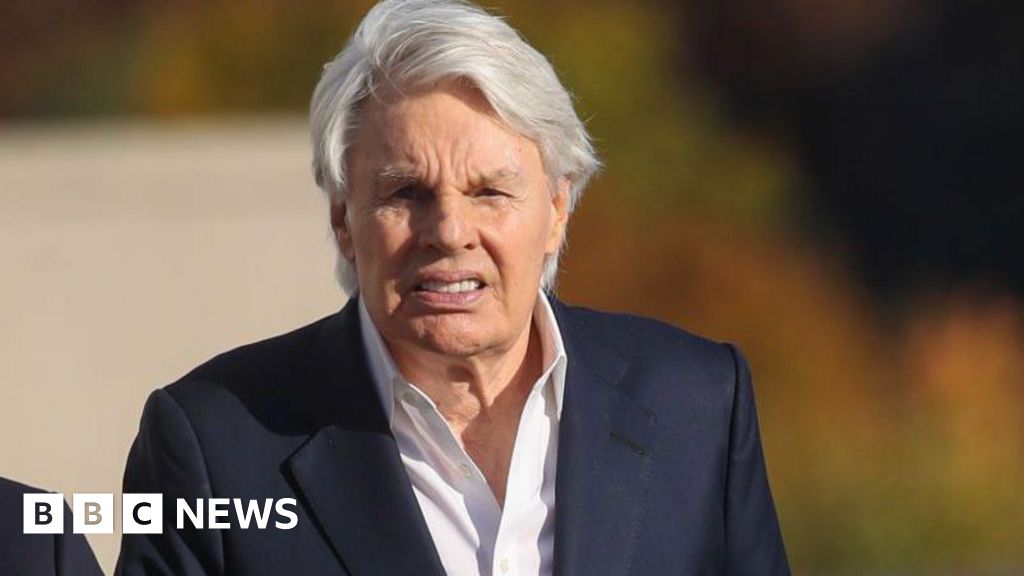Business
Lamborghini CEO says tariffs are causing even the wealthiest buyers to pause

Uncertainty around tariffs has caused even the wealthiest buyers of Lamborghini supercars to hold off on their purchases, CEO Stephan Winkelmann told CNBC.
While the White House recently announced an agreement with Europe on a 15% tariff rate, that rate hasn’t yet taken effect for cars. Lamborghini and other European automakers are still paying a tariff rate of 27.5% on exports to the U.S. With the price of a Lamborghini starting at $400,000, many buyers are choosing to wait for more stable tariff rates before buying, Winkelmann said.
“Some are waiting because they want to be sure that this is the final number that is going to be in place,” Winkelmann said. “Others are fine with it, or we will have negotiations.”
Wherever the final tariff rate settles, however, Winkelmann said the levies will have some impact on the company’s business. He said Lamborghinis can’t be produced in the U.S., since the “made in Italy” promise is core to the brand. And he said that even the wealthy are sensitive to price increases.
“They are millionaires or billionaires for a reason, so they know what they’re doing and why they’re doing things,” he said. “For us, free trade is the right approach. We all know that is what we want. But then there is the reality, and we have to deal with complexity, since we are in business. … We are ready to face whatever comes.”
For now, the company is fairly insulated from any immediate drop-off in demand, since it has a large back order. Cars being delivered today were ordered a year or two ago. Lamborghini announced this summer to dealers that prices would increase by 7% for the Temerario and Urus models and 10% for the Revuelto.
The company, owned by Volkswagen‘s Audi Group, is also riding high from a wave of new models. It reported record revenue in 2024 of more than 3 billion euros ($3.5 billion) and deliveries of 10,867 cars. It’s launched three new models since 2023, all plug-in hybrids: the 8-cylinder Temerario, which replaces the Huracan; the 12-cylinder Revuelto, which replaces the Aventador; and the Urus SE, a hybrid SUV.
For an upcoming fourth model, Lamborghini had announced an all-electric grand touring car to debut sometime in 2028. But Winkelmann said with EV demand slowing, the company is considering releasing it as a hybrid instead and will decide by the end of the year.
“There is a flattening in the acceptance of electric cars, not only at the high end and exclusive supercars, but also in the general market,” he said. “So the trend is going to be delayed in general, and we have to decide. For a car like Lamborghini, it’s not important to be the first one to show a new technology, but to be there when it’s accepted and to have the best technology at that time.”
Last week at Monterey Car Week, Lamborghini unveiled a new limited-production supercar called the Fenomeno. It’s the fastest and most powerful Lambo yet, boasting 1,080 horsepower and 0 to 60 in 2.4 seconds thanks to a 6.5-liter, V-12 engine paired with three electric motors.
Lamborghini will make only 29 Fenomenos, which are part of what Winkelmann calls the “few-offs” strategy of super-rare, hyper-performance versions of its current lineup for top clients.
Also helping the company: a surge in wealth around the world that’s becoming younger and more diverse. Lamborghini owners have an average of five cars in their garage, and owners of the higher-priced Lambos have an average of 10 cars. The average age of the Lamborghini buyer now is under 45, and in Asia it’s under 30, he said.
“There are a lot of countries where we have very young customers,” he said. “We have the second generation of wealth. But we also have a very young customer base of entrepreneurs who made their money themselves.”
Relative to the growth in global wealth, however, Lamborghini’s production has remained small. And while the U.S. is still its largest market, Lamborghini carefully manages supply in every country to make sure the brand remains exclusive and special, Winkelmann said.
“We will always look to make sure we do not crowd one market, and to have always a global view where we are selling the cars,” he said.
Women, he said, will also be a key driver. The Urus has welcomed more women buyers to the brand, and Lamborghini is holding more women-focused events, like the “She Drives a Lambo” driving gatherings.
“We have always been a very male-driven brand, very attractive to males with the design and performance,” Winkelmann said. “But on the other side, we are seeing that with the Urus, we have a lot more women stepping into the brand and having confidence with the brand.”
Business
Delhi & NCR Residents, Take Note: You May Soon Board Your Train From These Two New Stations

New Railway Stations in Delhi: People living in Delhi and the National Capital Region (NCR) may soon have a new routine when it comes to catching long-distance trains. The Railway Ministry has indicated that two important stations in the city, Safdarjung and Bijwasan, are being redeveloped, and passengers might be asked to board trains from here in the near future instead of the crowded New Delhi station.
For many, these stations could turn out to be closer to home, saving both time and the stress of travelling across the city.
At present, most NCR residents have to make their way to New Delhi Railway Station, no matter where they live. That may no longer be the case. Both Safdarjung and Bijwasan stations are in the final stages of redevelopment, and officials say they are expected to be ready by March 2025.
Once they operational, a number of trains may be reallocated from the main station.
These upgrades are part of the Amrit Bharat Station Scheme, under which 13 stations in the Delhi Division are being modernised. Safdarjung and Bijwasan are among the most important of them, and the work on both is almost complete. As soon as the finishing rounds are done, they will be opened to the public.
What Makes These Two Stations Important
Bijwasan is set to become Delhi’s fifth-largest railway station, after New Delhi, Old Delhi, Hazrat Nizamuddin and Anand Vihar. Once opened, it will have seven platforms and is expected to ease a heavy load from New Delhi station.
One of its biggest strengths will be its connectivity. Plans include a skywalk that links the station directly to metro lines and parking zones, allowing passengers to reach the platforms without dealing with traffic on the roads outside. Officials believe this will make travel easier for a large number of daily commuters.
Safdarjung Railway Station, on the other hand, is being designed as a mixed-use space. It will include about 2,200 office units, turning the station into a commercial hub. People working there will be able to walk straight from their office building to the platforms.
Railway officials say this will be the first station in the country designed to function simultaneously as a business centre and a point of train boarding.
Why Trains May Move From New Delhi Station
Redevelopment work at New Delhi station has already begun. At the moment, the activity is concentrated on the outer areas of the complex. But once work moves closer to the tracks, train operations will have to be temporarily relocated.
During that period, a good number of trains are likely to be moved to Safdarjung and Bijwasan. According to the ministry, Bijwasan could handle trains heading towards Haryana, Rajasthan, Gujarat and other parts of western India. Safdarjung is being considered for trains going towards Howrah, Jammu and Lucknow.
How It Will Help NCR Residents
Large numbers of people from Delhi and NCR presently board trains from New Delhi station for long-distance travel. Many of them actually live closer to Safdarjung or Bijwasan but still have to travel all the way to the city centre.
Once the shift begins, these passengers will be able to board trains from a station near their home. This will save them an extra trip across Delhi and reduce the rush at the New Delhi station as well.
Business
Rivian stock slides 9% after unveiling new AI tech and robotaxi ambitions

Rivian debuted new tech at its first “Autonomy and AI Day” in Palo Alto, California, Dec. 11, 2025.
Credit: Rivian
PALO ALTO, Calif. – Electric vehicle maker Rivian Automotive has developed a custom chip, car computer and new artificial intelligence models that will enable it to bring self-driving features to its forthcoming vehicles, the company revealed at its first “Autonomy and AI Day” on Thursday here.
Shares of Rivian were off roughly 3% during the hourlong event, and fell further as OpenAI made its own AI announcement Thursday, revealing its most advanced model yet. The stock was down more than 9% in afternoon trading.
Rivian also said it plans to roll out an Autonomy+ subscription with “continuously expanding capabilities” to customers of its second-generation vehicles in early 2026, to be powered by its Rivian Autonomy Processors and autonomy computers.
The Autonomy+ offering will be priced at $2,500 as a one-time, up-front purchase or is available for $49.99 per month to start. By comparison, competitor Tesla offers its premium FSD (Supervised) option for $8,000 up front or a $99 per month fee.
“AI is enabling us to create technology and customer experiences at a rate that is completely different from what we’ve seen in the past,” Rivian founder and CEO RJ Scaringe said during the event.
Company executives said in a statement that a near-future software update will include a “Universal Hands-Free,” capability, enabling Rivian customers “hands-free driving” on more than 3.5 million miles of roads in North America, covering the vast majority of marked roads in the U.S.
Scaringe said the new advanced driver-assistance system will continue to improve as more miles are driven, through reinforced learning.
Unlike its primary competitor, Tesla, Rivian said it intends to use lidar, or light detection and ranging, systems and radar sensors in its forthcoming R2 cars to enable “level 4,” or fully automated driving, as defined by SAE Levels of Driving Automation.
A passenger can sleep in the back seat in a level 4 self-driving car while it carries them to their destination in normal traffic and weather conditions. Waymo, the Alphabet-owned robotaxi leader in the U.S., considers its vehicles level 4.
Rivian CEO RJ Scaringe at the company’s first “Autonomy and AI Day” on Dec. 11, 2025, in Palo Alto, California.
Lora Kolodny | CNBC
Scaringe said Thursday the company’s forthcoming self-driving vehicles enable it to pursue robotaxis, which Tesla has promised for years but has yet to launch.
“Now, while our initial focus will be on personally owned vehicles, which today represent a vast majority of the miles to the United States, this also enables us to pursue opportunities in the rideshare space,” Scaringe said during the event.
Rivian is not alone in aiming to deliver autonomous systems that meet level 4 expectations, while rolling out partially automated features along the way to drivers who generally want these to reduce fatigue on long drives or make them safer behind the wheel overall.
Tesla and General Motors are working on their own proprietary driverless systems, while Honda, Lucid and Nissan have partnered with venture-backed autonomous vehicle tech startups (Helm.AI, Nuro and Wayve, respectively) to develop similar systems with a range of different technical approaches.

Rivian and Tesla stock’s since Rivian went public.
Powering Rivian’s self-driving aspirations will be a new in-house chip, which is set to launch in 2026. Vidya Rajagopalan, Rivian vice president of electrical hardware, said the chip uses “multi-chip module” packaging and has “high memory bandwidth,” which is “key for AI applications.” Rivian’s chip boasts bandwidth of 205 gigabytes per second.
“Rivian is uniquely positioned to move from a software-defined vehicle and bring to the world an AI-defined vehicle,” Rivian Chief Software Officer Wassym Bensaid said.
The automaker also announced a new AI-powered “Rivian Assistant,” a next-generation voice interface launching in early 2026 on its first- and second-generation vehicles.
Rivian is under pressure to prove its future growth potential to investors and to grow its customer base amid slowing sales of battery electric vehicles in the U.S. and competition from Chinese EV makers internationally.
The fully electric vehicle segment has experienced a sales slump domestically after the Trump administration put an early end in September to a $7,500 federal tax credit previously available for EV buyers in the U.S.
Shares of Rivian are up about 25% this year, but remain off more than 80% since the company’s 2021 initial public offering amid internal and external challenges.
Business
Ex-Abercrombie & Fitch CEO fit to stand trial, prison officials say

The former chief executive of Abercrombie & Fitch is now fit to stand trial on sex- trafficking and prostitution charges after spending months in hospital, prison officials say.
Mike Jeffries was declared “mentally incompetent” by a court in May and said to be suffering with dementia and late onset of Alzheimer’s disease. A judge ordered him to be treated for up to four months to see if he was likely to regain competency.
US prosecutors now say that medical experts have found him competent to stand trial.
Mr Jeffries was arrested and charged last October along with his British partner, Matthew Smith, 61, and their alleged middleman, James Jacobson, 72. All three deny the allegations.
Mr Jeffries, 81, was released from FMC Butner – a federal prison in North Carolina for men with special health needs – in late November, according to court documents.
Writing to Judge Nusrat Choudhury, prosecutors said that prison officials had concluded that Mr Jeffries was “able to understand the nature and consequences of the proceedings against him and to assist properly in his own defense”.
In a court hearing on Thursday, assistant US attorney Megan Farrell said this followed an assessment by a neuropsychologist and psychologist.
A final competency hearing will be set for early 2026 with prosecutors requesting a trial date for October next year, the court heard.
The former fashion executive and two others were charged with running an international sex-trafficking and prostitution business from at least 2008-2015.
All three have pleaded not guilty to the charges, which carry a maximum sentence of life in prison.
Federal prosecutors accused them of using their money and influence to prey on vulnerable men for their own sexual gratification and said they used force, fraud and coercion to make aspiring models engage in “violent and exploitative” sexual acts.
Their arrests followed a 2023 BBC documentary and ongoing podcast series that revealed the trio had been at the centre of a sophisticated operation scouting young men for sex around the world while Mr Jeffries was chief executive of Abercrombie & Fitch.
In March, a court ruled that Abercrombie & Fitch had to pay for Mr Jeffries’ criminal defence costs – a figure lawyers say is likely to run into millions – as a result of an indemnification agreement he signed while stepping down in 2014.
Then, in May, Brian Bieber, Mr Jeffries’ criminal defence lawyer, said his client had been evaluated by doctors who determined he had Alzheimer’s disease, Lewy Body disease, and the residual effects of a traumatic brain injury requiring around-the-clock care, which was supported by two medical experts.
Alongside criminal charges, Mr Jeffries, his partner Matthew Smith and Abercrombie & Fitch have been defending multiple civil lawsuits brought by alleged victims.
Earlier this year, the BBC revealed that more than 40 men have now come forward with civil allegations of rape, sexual assault or drugging, accusations Mr Jeffries and Mr Smith “vehemently deny”.
One of the plaintiffs, who asked to remain anonymous as he’s been interviewed by the FBI as part of its criminal investigation, said he was shocked and relieved by the latest opinion that Mr Jeffries is fit to stand trial.
“For the first time, it feels like we’re now moving toward a future where he must answer for what happened and for what so many of us endured.
“It means the truth could finally be heard in a courtroom, and for survivors, that moment for accountability has been a long time coming.
“I hope the system will finally require him to stand up and face the weight of everything he’s spent years avoiding.”
Abercrombie & Fitch did not respond to requests for comment, though it has previously said that it had no knowledge of alleged sexual misconduct or sex trafficking and “up until the moment that the BBC’s reporting was released in October 2023, there was nothing public about the allegations against Jeffries”.
It said that new leadership had since transformed the company, and it has “zero tolerance for abuse, harassment or discrimination of any kind”.
-

 Politics5 days ago
Politics5 days ago17 found dead in migrant vessel off Crete: coastguard
-
Uncategorized1 week ago
[CinePlex360] Your site has updated to WordPres
-

 Sports6 days ago
Sports6 days agoAustralia take control of second Ashes Test | The Express Tribune
-

 Business1 week ago
Business1 week agoAsian stocks today: Markets trade mixed ahead of US economic data; HSI nears 1% loss; Nikkei adds over 800 points – The Times of India
-

 Entertainment1 week ago
Entertainment1 week agoSabrina Carpenter recalls ‘unbelievable’ experience with pal Taylor Swift
-

 Fashion1 week ago
Fashion1 week agoBangladesh’s economic outlook cautiously optimistic: Govt
-

 Fashion4 days ago
Fashion4 days agoGermany’s LuxExperience appoints Francis Belin as new CEO of Mytheresa
-

 Tech1 week ago
Tech1 week agoThe Trump Administration Wants Immigrants to Self-Deport. It’s a Shit Show












